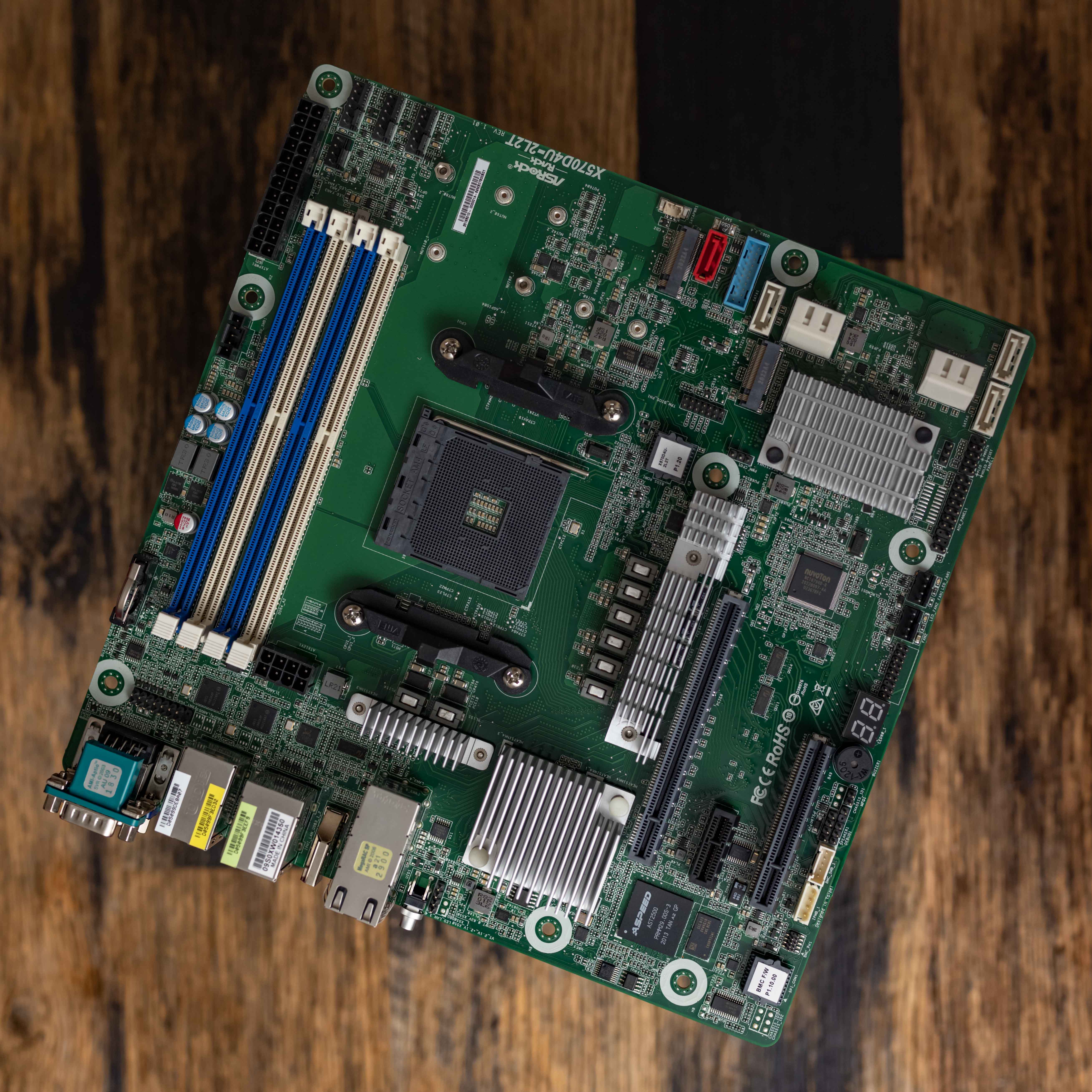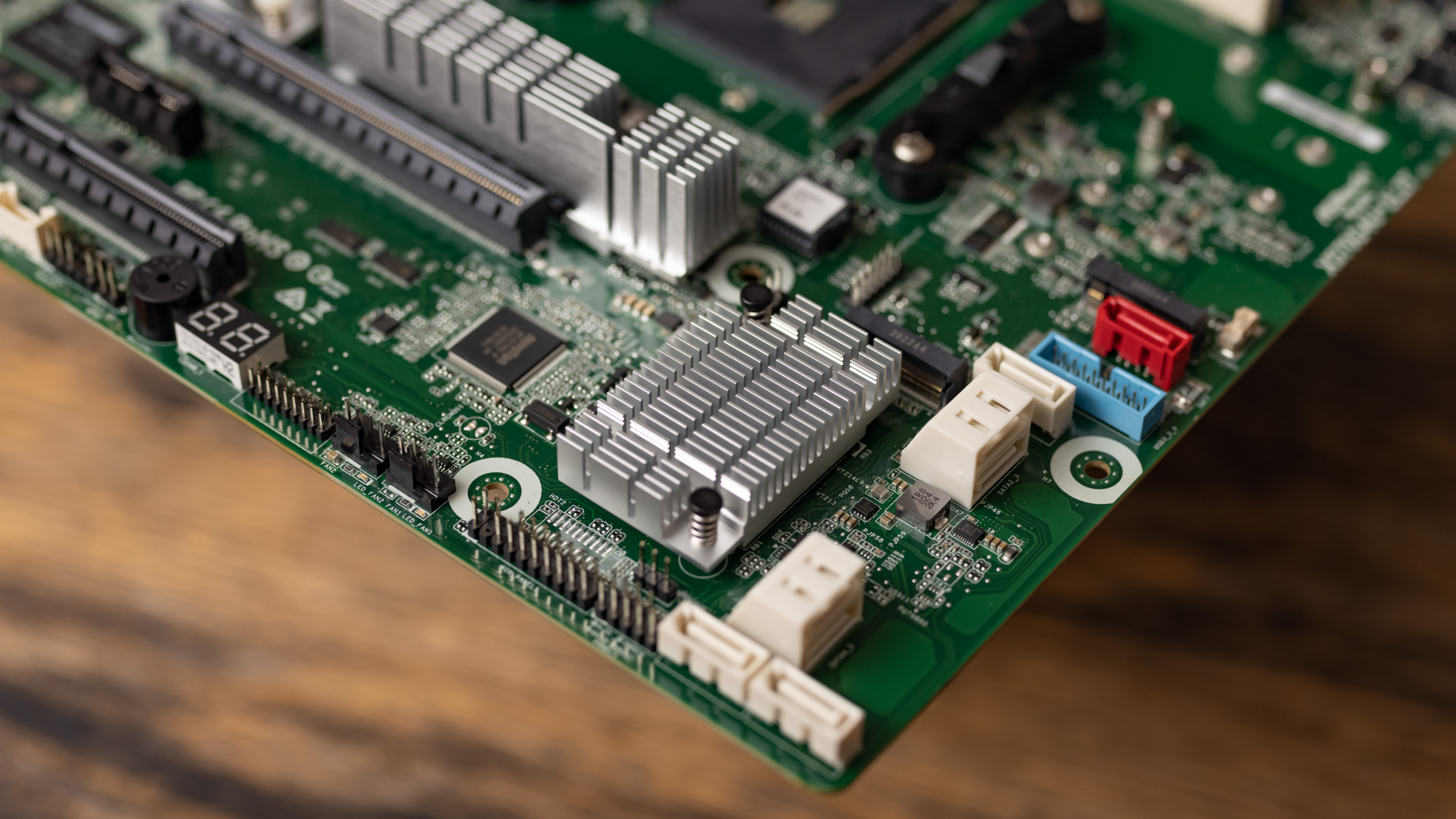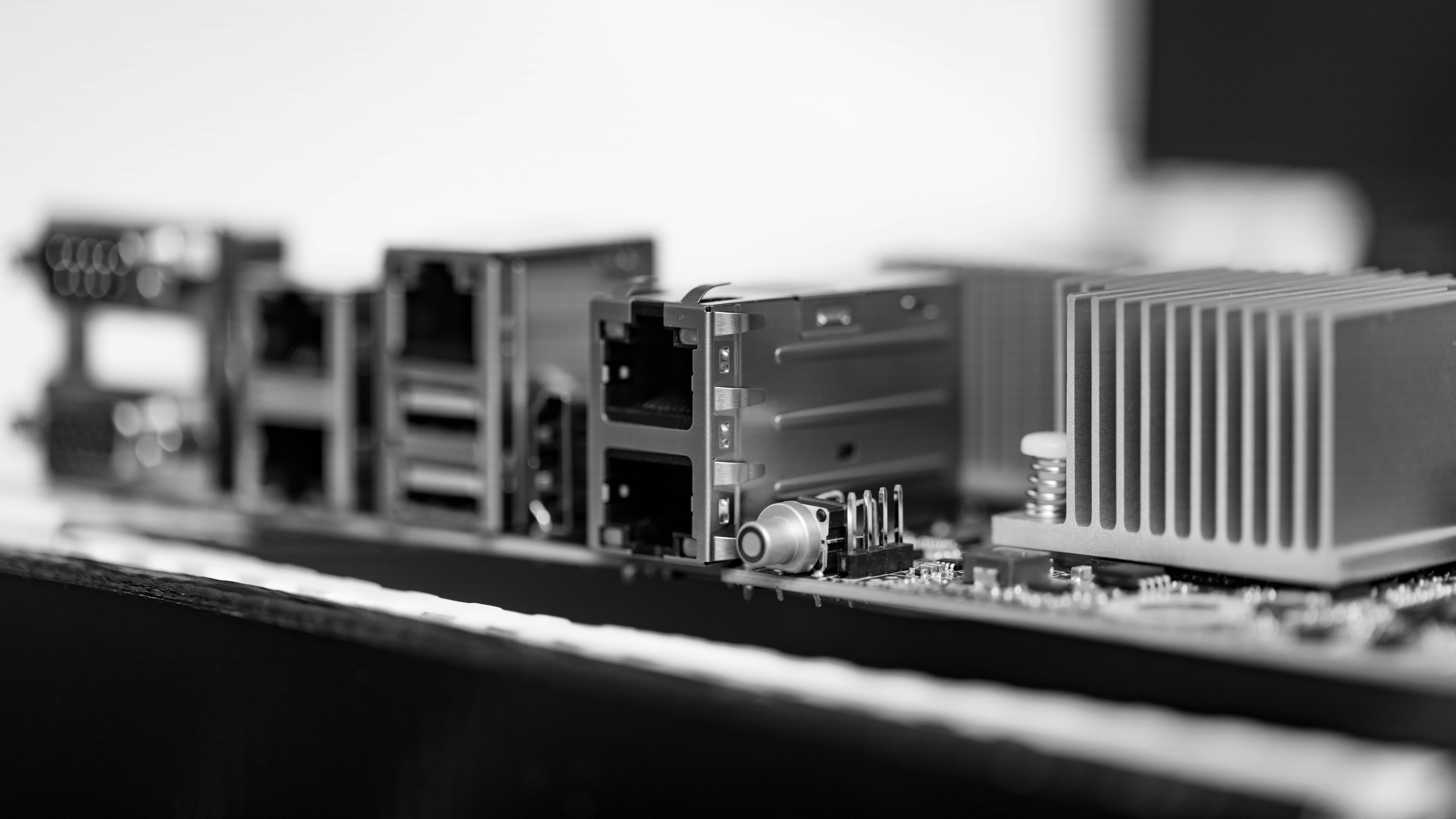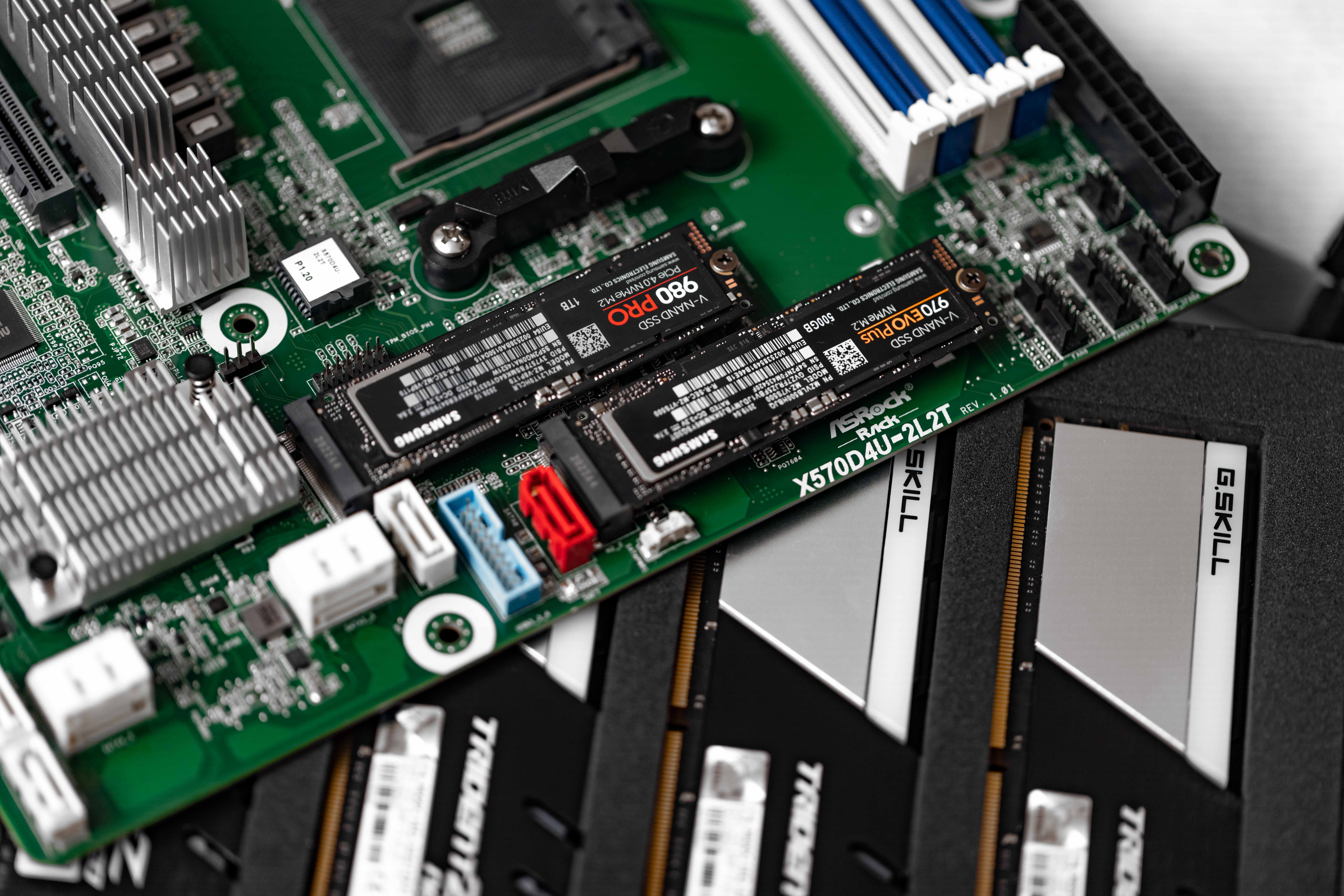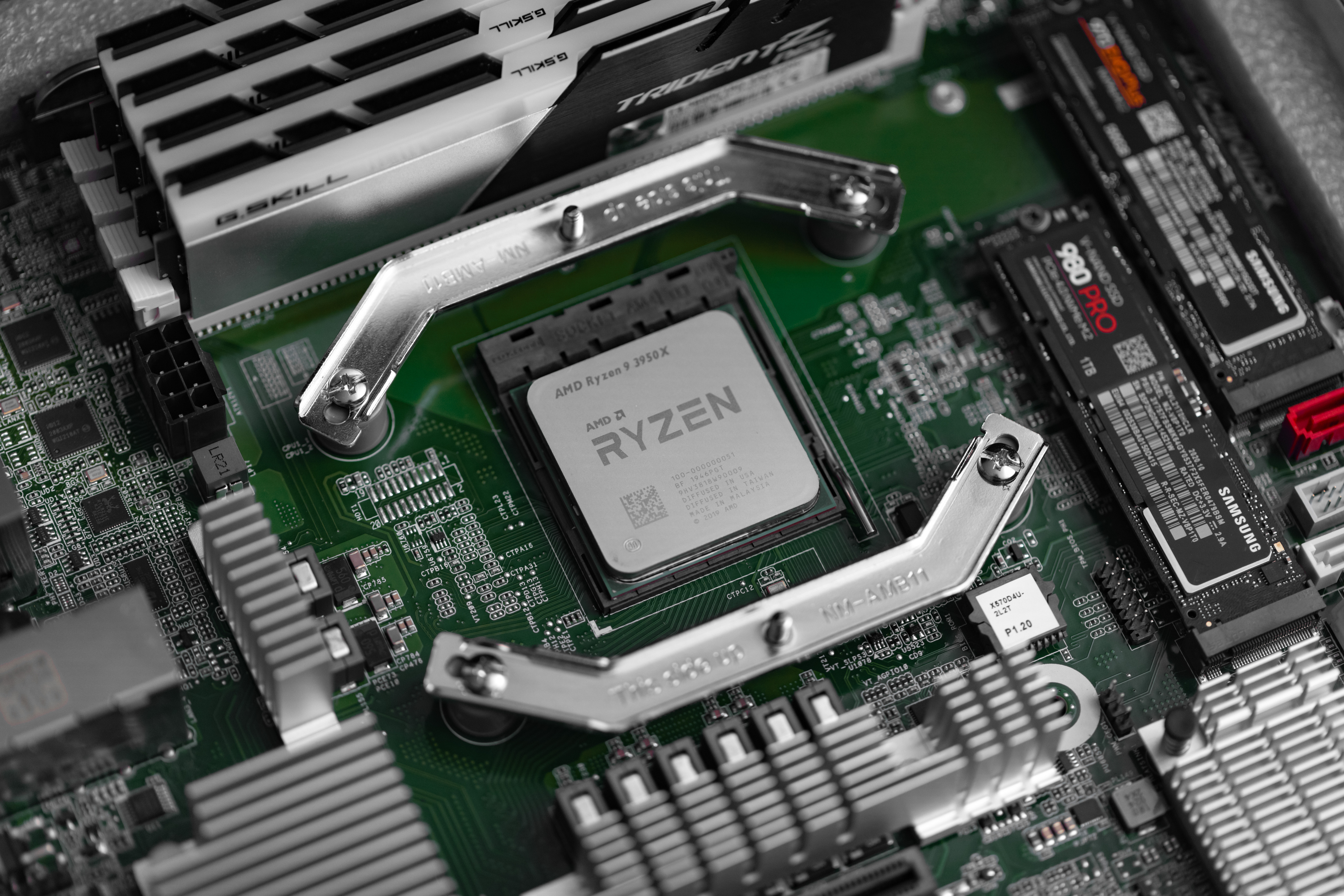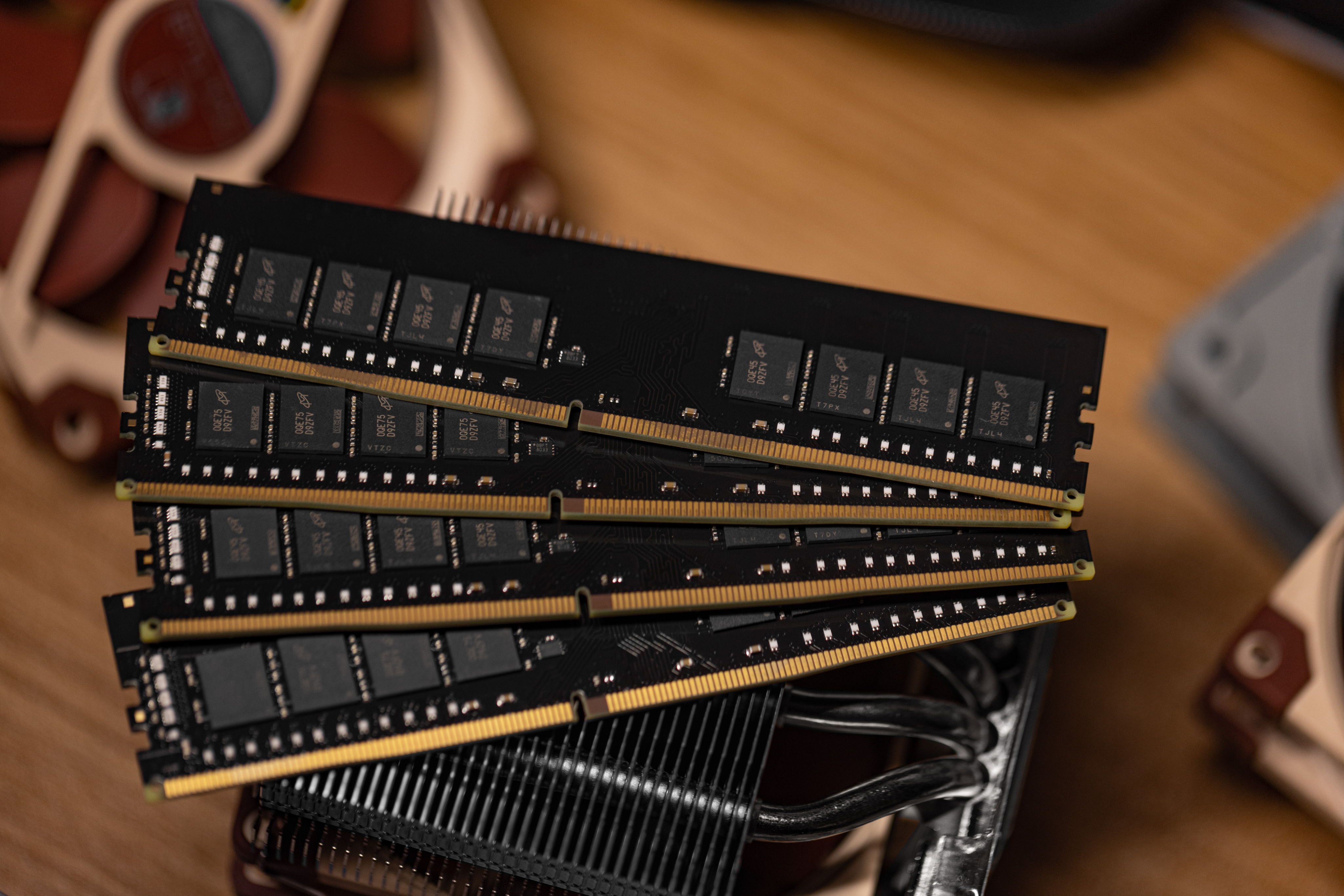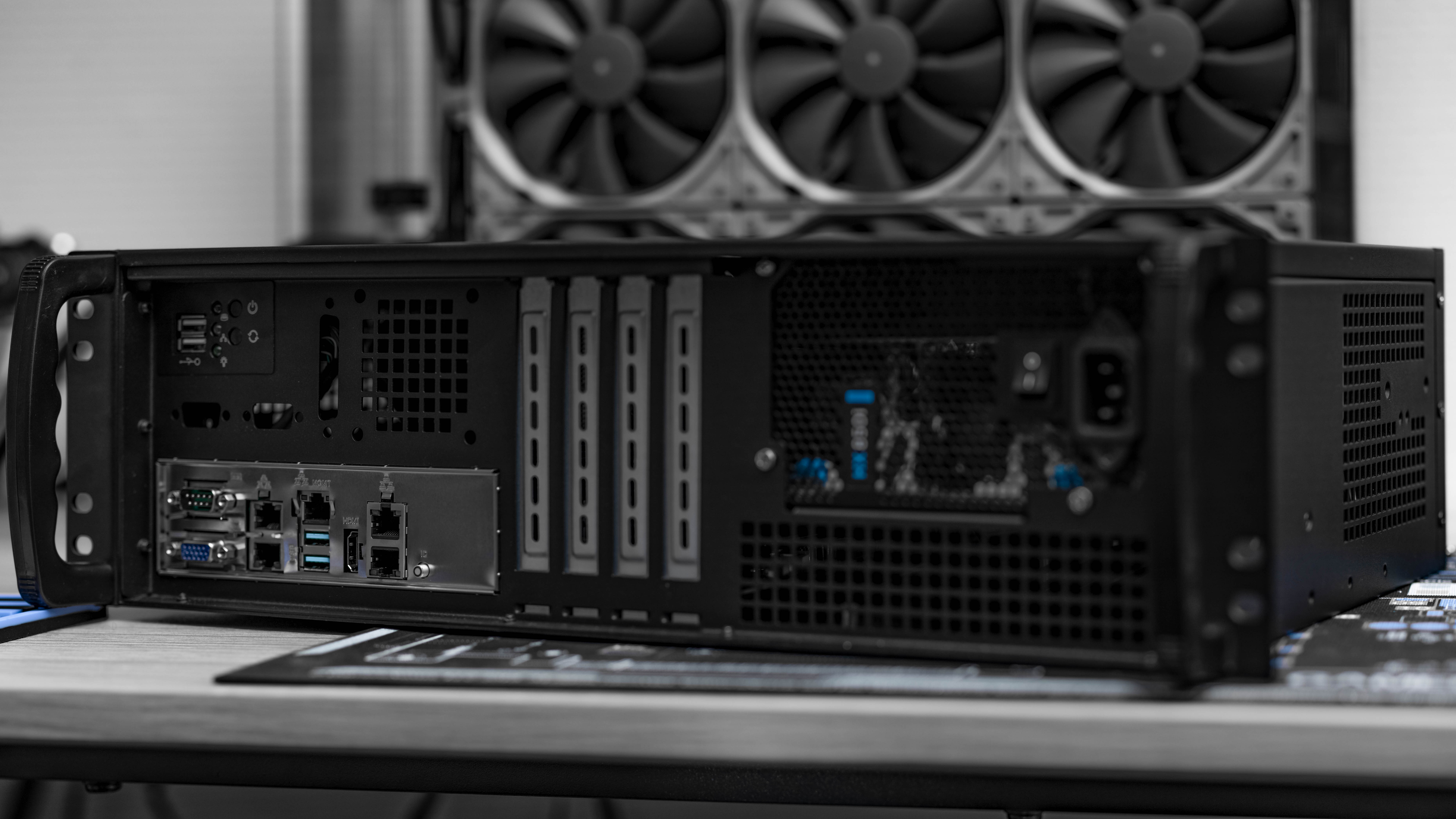New Parts:
Noctua NH-D9L + Additional Noctua NF-A9 PWM
AsRock Rack X570D4U-2L2T micro-ATX Server Motherboard
HyperX Fury 128GB (4x 32GB) 3200MHz DDR4 Ram CL16 (Temporary)
SAMSUNG 980 PRO M.2 2280 1TB PCI-Express 4.0 x4 NVMe SSD
PLinkUSA IPC-330F 3U Front Access Rackmount Server Case
Existing Parts:
AMD Ryzen 9 3950X 16-core
Samsung SSD 970 Evo Plus 500GB - NVMe PCIe M.2 2280 SSD (Temporary)
Corsair HX850i 850 Watt 80 Plus Platinum ATX Modular Power
This is a rack mount hypervisor build going into my test lab. Its main use will be docker containers. 3 VMs consisting of Alpha, Beta, and Production projects. I named it Dr. Matisse since its main use is Docker and it uses Zen 2.
Things I loved about the build:
- Finally finding an AsRock Rack X570D4U-2L2T in stock! This board is the driving force behind this build. It has been tough to find stock since it was released. Usually staying in stock for under 5 mins. Previously I had a quad core Skylake build. It was showing its age and I was going to eventually replace it with the WS X570-ACE build once I was finished with that project. Sadly, this would not end up being the case. ASUS’ out of band management implementation was absolutely the furthest from production ready. It was extraordinarily unreliable, the software was pre-alpha level bad, and they had not even finished writing a manual when the board got released. Changing anything in the BIOS was liable to break something. Anyway, that was not going to cut it. The true IPMI implementation of the X570D4U-2L2T is magnificent. It uses the AST2500 which is well known and familiar to me. Next is the integrated dual 10GbE NIC. I do not need any expansion for this now, but when I do in the future, I have it since the PCIe slots are free.
- Putting it all together. This was another simple build. It runs headless since I can manage it via IPMI, so no GPU needed. Local storage is NVMe, so no cables needed there. It was basically drop it into a case and screw everything in.
- Modern High Core Count for “Cheap” – I am more of a modern architecture type person. I respect the power and affordability of older enterprise hardware, but when it comes to my test lab, I prefer playing with/learning new things. That said, I do not need all the features of EPYC in my test lab. I save that for my production racks.
Challenges:
- Case choice. Once again, options for a general PC build in a rack form factor are rough. I came across the PLinkUSA IPC-330F when a friend suggested it for the WS X570-ACE build but could not use it due to the GPUs needed more clearance. It is a very no-frills case, but it gets the job done with bonus points for being able to flip the handles to the rear, making it a front access case.
Other Notes:
Out of the box, it is set to wait 90 seconds for the BMC before POSTing. Very glad I had been reading up on the Level1Techs thread since the X470 version of the board, so I was ready for quirks. It is a pretty niche board in the first place.
USB selection is limited. There are two onboard and a USB 3.1 Gen 2 header. I don’t do any passthrough with this machine and manage it exclusively via IPMI, so this wasn’t an issue for me.
The IPMI is extremely modern. It supports HTML 5 and keeps the older Java viewer around just in case.
IPMI Screenshots :
https://cdn.discordapp.com/attachments/752690157823721522/779771048572878848/unknown.png
https://cdn.discordapp.com/attachments/752690157823721522/780597634091974656/unknown.png
Conclusion:
With 32 threads vs the 4 I had on the Skylake chip; this thing is wonderful. No more needing to keep resources in mind when deploying experiments. It is nice and quiet, too. My lab rack is a little on the loud side due to needing some of the equipment closer to me than my distant server closets allows. This has eliminated some of the higher pitched frequencies that the 15K RPM 40mm fans in the Skylake server generated. All in all, I am extremely pleased with this build and look forward to a not a ton of threads and a ton of RAM. (I have lots of fast tiered network storage, so the 1.5TB of local storage is not an issue at all.)

